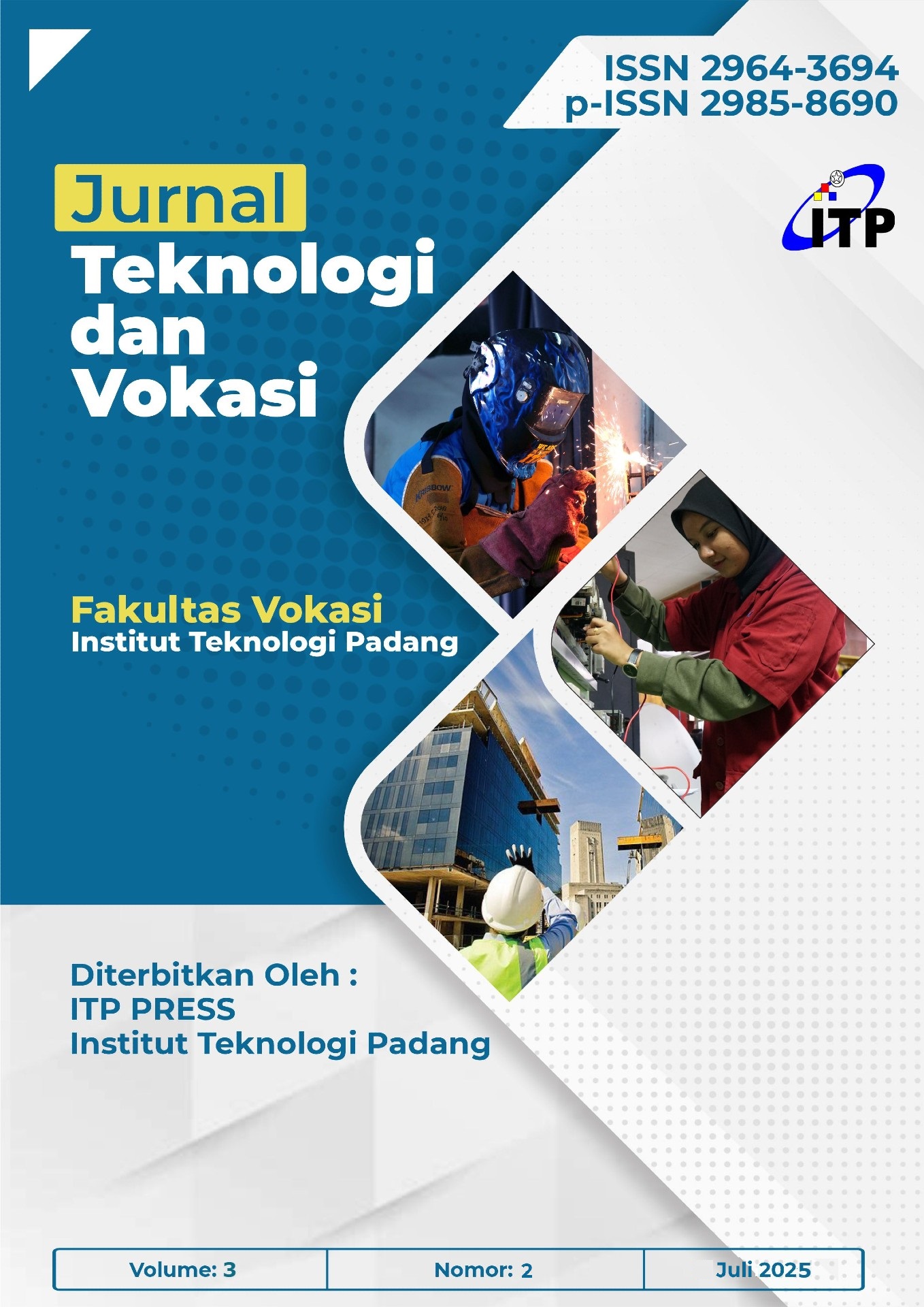THE EFFECT OF ADDING GLASS FILM TO THE SURFACE OF A SOLAR PANEL ON EFFICIENCY AND POWER
DOI:
https://doi.org/10.21063/jtv.2025.3.2.122-135Abstract
This study is an experimental research that investigates the effect of varying solar panel tilt angles (180°, 15°, 30°) and adding an 80% darkness level glass film layer on power and efficiency. The study compares the results with and without the glass film for each tilt angle. The research methodology employed includes literature review and experimental development. The literature review provides a foundation for understanding the fundamental theories of solar panels, their working principles, and the impact of tilt angle on power and electrical efficiency. The results indicate that the tilt angle of solar panels significantly affects power and efficiency. The solar radiation received per unit area for each tilt angle (180°, 30°, 15°) is 920.3 W/m², 1002 W/m², and 1092.5 W/m² at 10:00 WIB, respectively, with the highest radiation observed at a 15° tilt angle. The power input to the solar panel without glass film for each tilt angle (180°, 30°, 15°) is 635 watts, 691.38 watts, and 753.82 watts at 10:00 WIB, respectively, with the highest power recorded at a 15° tilt angle. The efficiency of the solar panel without glass film for each tilt angle (180°, 30°, 15°) is 50.29%, 46.96%, and 53.46% at 14:00 WIB, respectively, with the highest efficiency achieved at a 15° tilt angle
Downloads
Downloads
Published
Issue
Section
License
Copyright (c) 2025 ITP Press

This work is licensed under a Creative Commons Attribution-ShareAlike 4.0 International License.











